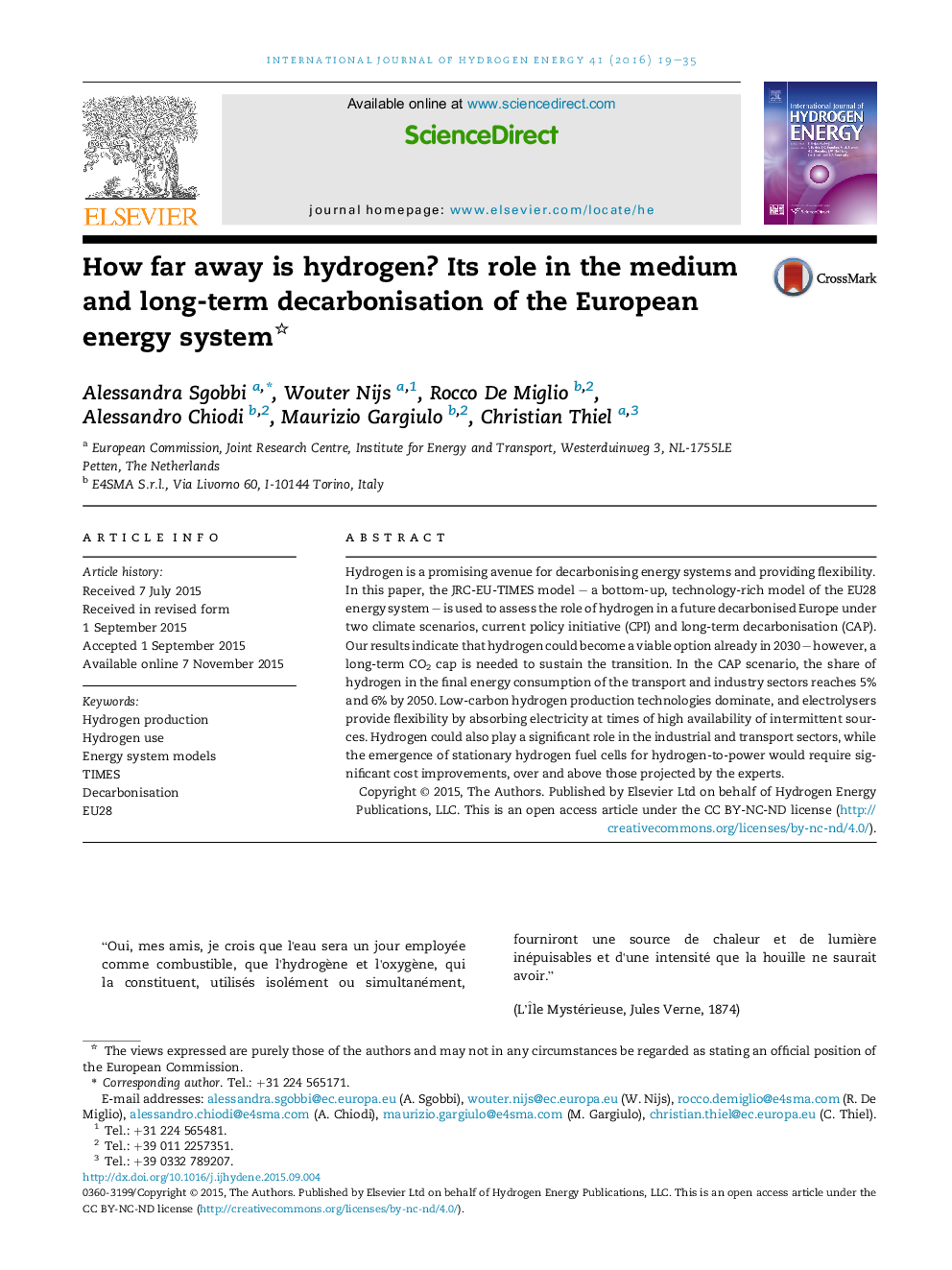| Article ID | Journal | Published Year | Pages | File Type |
|---|---|---|---|---|
| 7712618 | International Journal of Hydrogen Energy | 2016 | 17 Pages |
Abstract
Hydrogen is a promising avenue for decarbonising energy systems and providing flexibility. In this paper, the JRC-EU-TIMES model - a bottom-up, technology-rich model of the EU28 energy system - is used to assess the role of hydrogen in a future decarbonised Europe under two climate scenarios, current policy initiative (CPI) and long-term decarbonisation (CAP). Our results indicate that hydrogen could become a viable option already in 2030 - however, a long-term CO2 cap is needed to sustain the transition. In the CAP scenario, the share of hydrogen in the final energy consumption of the transport and industry sectors reaches 5% and 6% by 2050. Low-carbon hydrogen production technologies dominate, and electrolysers provide flexibility by absorbing electricity at times of high availability of intermittent sources. Hydrogen could also play a significant role in the industrial and transport sectors, while the emergence of stationary hydrogen fuel cells for hydrogen-to-power would require significant cost improvements, over and above those projected by the experts.
Related Topics
Physical Sciences and Engineering
Chemistry
Electrochemistry
Authors
Alessandra Sgobbi, Wouter Nijs, Rocco De Miglio, Alessandro Chiodi, Maurizio Gargiulo, Christian Thiel,
